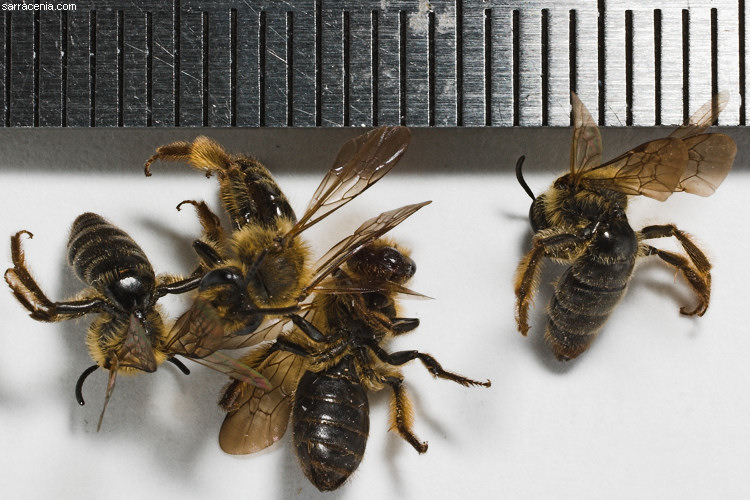
A few more:
Stephen and I saw several cases in which Andrena entered Darlingtonia flowers,
and we captured more individuals.
They were also very active in pollinating the Vaccinium at the site. I found that that easiest way to capture
the bees was to simply look around for one of them (usually working the Vaccinium plants), and then trail after it.
As one of the bees wandered from flower to flower, a trip to a Darlingtonia flower was nearly an inevitability.
I never saw how they
exited the flower, but Stephen said they dropped out from the bottom of the flower.
A few days later, I returned to the site. In the intervening days, most of the pollen from the
Darlingtonia had been harvested. Neither European honeybees or Andrena were to be seen anywhere,
even though I was there at the same time of the day as before.
Is it possible that Andrena nigrihirta is the primary or even exclusive pollinator? It is hard to say. And
I can't even
say for certain these bees were actually transferring pollen from plant to plant. Elder (1997, p27) reports that
one day she observed an Andrena
bee (she does not state the species) enter
a flower, and she captured it and found
Darlingtonia pollen on its body. Upon laboratory examination, I could not find pollen on the Andrena
I collected. However, I had kept them alive in mesh baggies for several hours before I examined them;
perhaps the pollen was removed from the bees in the interim,
by some mechanism I do not know.
Despite introducing so many new questions, this certainly was a memorable day filled with
interesting observations!